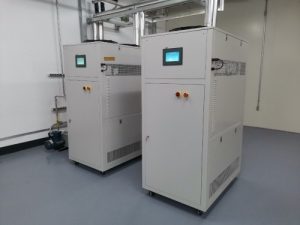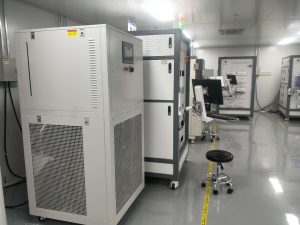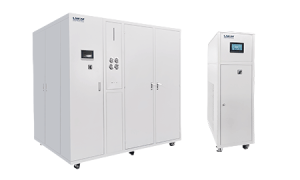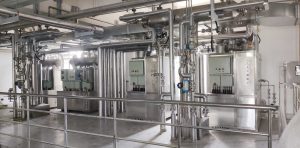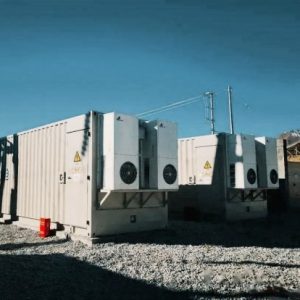Thermal Oil System for Reactors in chemical/industrial laboratory
A thermal oil system for a reactor is a heat transfer system designed to provide precise and controlled heating or cooling to a chemical or industrial reactor.
This system uses a heat transfer fluid, typically a high-temperature mineral oil or synthetic fluid specifically formulated for this purpose, which can operate at elevated temperatures without breaking down or evaporating.Here’s an overview of the components and operation of a thermal oil system for a reactor:
1. Heat Transfer Fluid (Thermal Oil): The heart of the system is the heat transfer fluid, which has excellent thermal stability, low viscosity change over temperature, and high specific heat capacity. It is circulated through the reactor jacket or internal coils, efficiently transferring heat to or from the reactor contents.
2. Heating Source: The thermal oil is heated by an external source, such as a gas-fired burner, electric heaters, or a steam boiler. The heating source raises the temperature of the thermal oil to the desired level for the reactor process.
3. Thermal Oil Pump: A pump circulates the hot thermal oil through a closed-loop system, ensuring uniform heat distribution within the reactor. The pump is usually equipped with temperature and pressure monitoring devices to maintain safe operating conditions.
4. Heat Exchanger: In some cases, the thermal oil system may include a heat exchanger to indirectly heat or cool the reactor. The heat exchanger allows the thermal oil to transfer its heat to another medium, such as water or glycol, which then flows through the reactor jacket or coils. This indirect heating method provides an additional safety barrier and is often used when dealing with highly reactive or hazardous materials.
5. Expansion Tank: An expansion tank is incorporated into the system to accommodate the volume changes of the thermal oil as it heats up and cools down. It also serves as a reservoir for makeup fluid and helps maintain a constant system pressure.
6. Control System: A sophisticated control system monitors and regulates the temperature of the thermal oil, adjusting the heating source output or heat exchange rate as needed. It ensures that the reactor maintains a stable and accurate temperature profile throughout the process, which is crucial for consistent product quality and process efficiency.
7. Safety Features: The thermal oil system includes various safety features, such as temperature and pressure sensors, alarms, automatic shutdown systems, and fire protection measures, to prevent overheating, leaks, and other potential hazards.In summary, a thermal oil system for a reactor is a critical component in maintaining precise temperature control during chemical reactions or processes.
It offers efficient heat transfer, versatility in temperature control, and enhanced safety compared to direct heating methods, making it a popular choice in various industries, including pharmaceuticals, petrochemicals, and fine chemicals.
Thermal Oil Systems
 Industrial Chiller Heater Equipment Supplier-LNEYA
Industrial Chiller Heater Equipment Supplier-LNEYA

